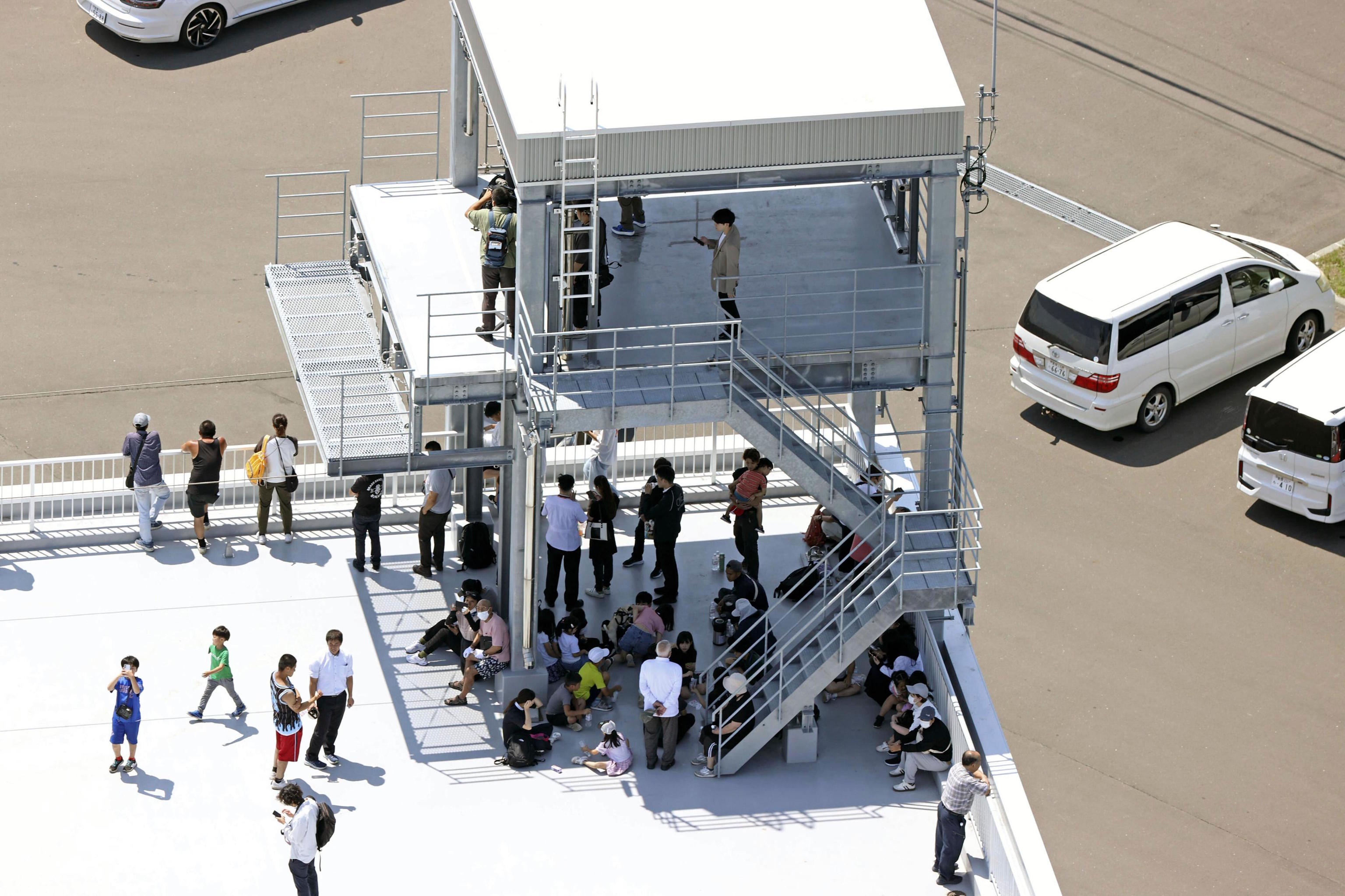Since 2011, there had not been an earthquake of such magnitude in the world. An 8.8 earthquake has shaken the Russian Kamchatka Peninsula at 11:24 a.m. (local time), instantly triggering tsunami alerts in the Pacific basin. Among the areas where sirens have sounded is the region of Japan that was devastated in 2011 by the historic Tohoku earthquake, with a magnitude of 9.1, which caused the great tsunami and subsequent nuclear disaster in Fukushima, ranking fourth in the list of the largest earthquakes ever measured on Earth. Only surpassed by the Valdivia earthquake (Chile) of 1960, with a magnitude of 9.5; the 2004 earthquake in the Indonesian island of Sumatra (9.3); and the 1964 earthquake in Anchorage (Alaska) (9.2).
"It is a major earthquake," summarizes Maria José Jurado. The researcher from the Jaume Almera Earth Sciences Institute (CSIC) is familiar with these subduction zones as she was drilling in the Japan Trench last year, which gave rise to the Tohoku earthquake. This Wednesday's very strong earthquake was only three tenths less than the one that triggered the tragedy in Japan 14 years ago, ranking fifth on the list of the largest recorded earthquakes.
The epicenter of this 8.8 earthquake was in the sea, 20 kilometers deep and about 130 kilometers from the Russian eastern coast, so although it generated tsunamis, the material damage from the tremor itself has not been significant on land. The city of Petropavlovsk-Kamchatsky, with 180,000 inhabitants, is close to the epicenter but, so far, no fatalities have been reported. There have already been more than a dozen aftershocks, some with a magnitude greater than 7, so populations in nearby areas are on alert.
This very strong tremor, however, did not surprise geologists. Not only because on July 20 there was already a strong earthquake, magnitude 7.4, which could now be identified as a foreshock. "It took place more or less in the same subduction zone as the 2011 Japan earthquake, and it is a typical earthquake, with a lot of power and a very significant magnitude," says Pablo Gabriel Silva Barroso, a geologist from the University of Salamanca, emphasizing that "it is one of the most active seismic zones in the world."
As he explains in a phone interview, the earthquake occurred at the boundary between the Pacific Plate and the Okhotsk microplate. "The Pacific Plate subducts beneath the Okhotsk Plate at a speed of about 9 centimeters per year, causing displacement," says this expert from the University of Salamanca.
This area of the Kamchatka Peninsula, he reviews, is periodically shaken by very strong earthquakes, even of magnitude 9: "They occurred in 1737, 1841, 1952, and now in 2025, which means that every 75 to 100 years there is an earthquake with a tsunami of these characteristics." The last one, in 1952, resulted in more than 2,300 deaths. According to the U.S. Geological Survey (USGS), Wednesday's earthquake occurred very close to the epicenter of that 1952 magnitude 9 earthquake.
Magnitude measures the energy released by the tremor (on a scale from 1 to 10), while intensity informs about the destructive force (on the Mercalli seismic scale ranging from I to XII). "The 1952 earthquake in this Russian region had a magnitude of 9 and an intensity of IX. When the earthquakes of 1737 and 1841 occurred, there were no current seismographs, but it is estimated that they had magnitudes between 9 and 9.3," Pablo Gabriel Silva explains.
Regarding the depth at which today's earthquake epicenter is located, he considers that "for a subduction zone, 20 kilometers is quite shallow because subduction is active up to 650 kilometers deep. That is, an earthquake can occur along that entire extent, and earthquakes that generate tsunamis in those areas are shallow, less than 20 kilometers," he points out. For comparison, the largest earthquake Spain experienced in the 20th century was the Dúrcal earthquake (Granada) in 1954. It had a magnitude of 7.8 and an intensity of IV (light), originating at a depth of 626 kilometers.
The Japan earthquake caused a nine-meter displacement to the east, and although it is still early to know the effects of Wednesday's 8.8 tremor, the first estimates are already emerging. According to sismologist and Geophysics professor at the University of Victoria in Wellington, John Townend, "it is likely to have involved a displacement of more than 10 meters in an area of approximately 150 x 400 kilometers, although further analysis will be needed over the next 12-24 hours to confirm it."
According to this expert, the earthquake has released approximately 30 times more energy than the 7.8 Kaikura earthquake of 2016, and about three times less energy than the Tohoku earthquake of magnitude 9.1. "The depth, magnitude, and fault characteristics in today's earthquake combined to generate a tsunami that has already affected nearby coasts and Japan, and will continue to have effects throughout the Pacific in the coming hours," Townend warns.
It is also expected that there will continue to be aftershocks. According to Silva, "there will likely be aftershocks felt by the population over the next three, four, or five days."
